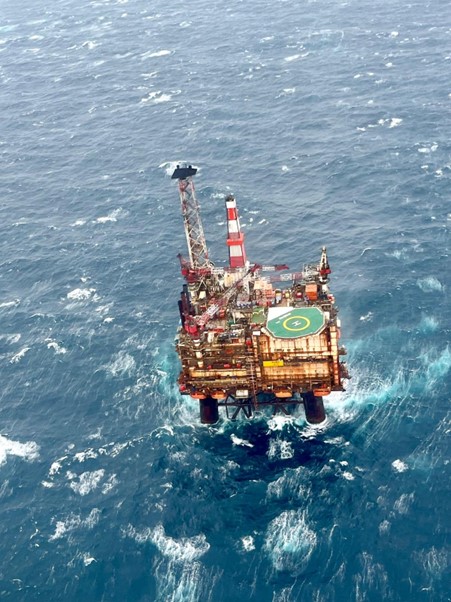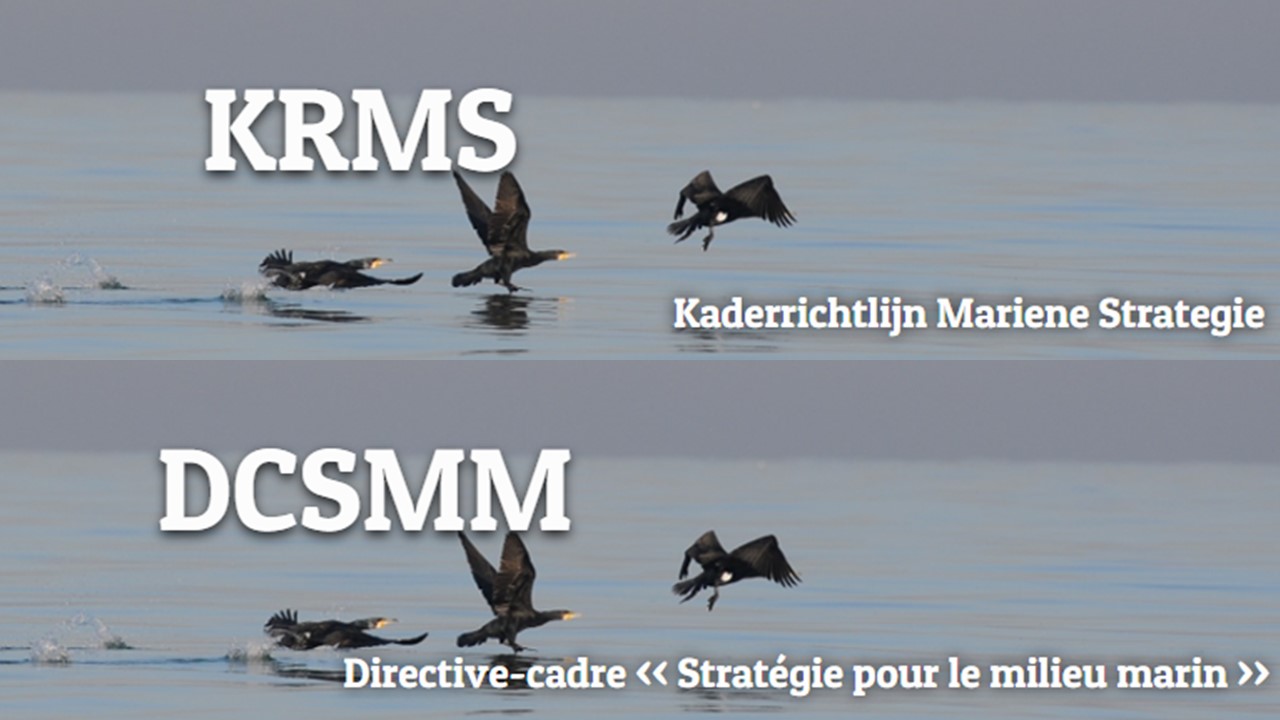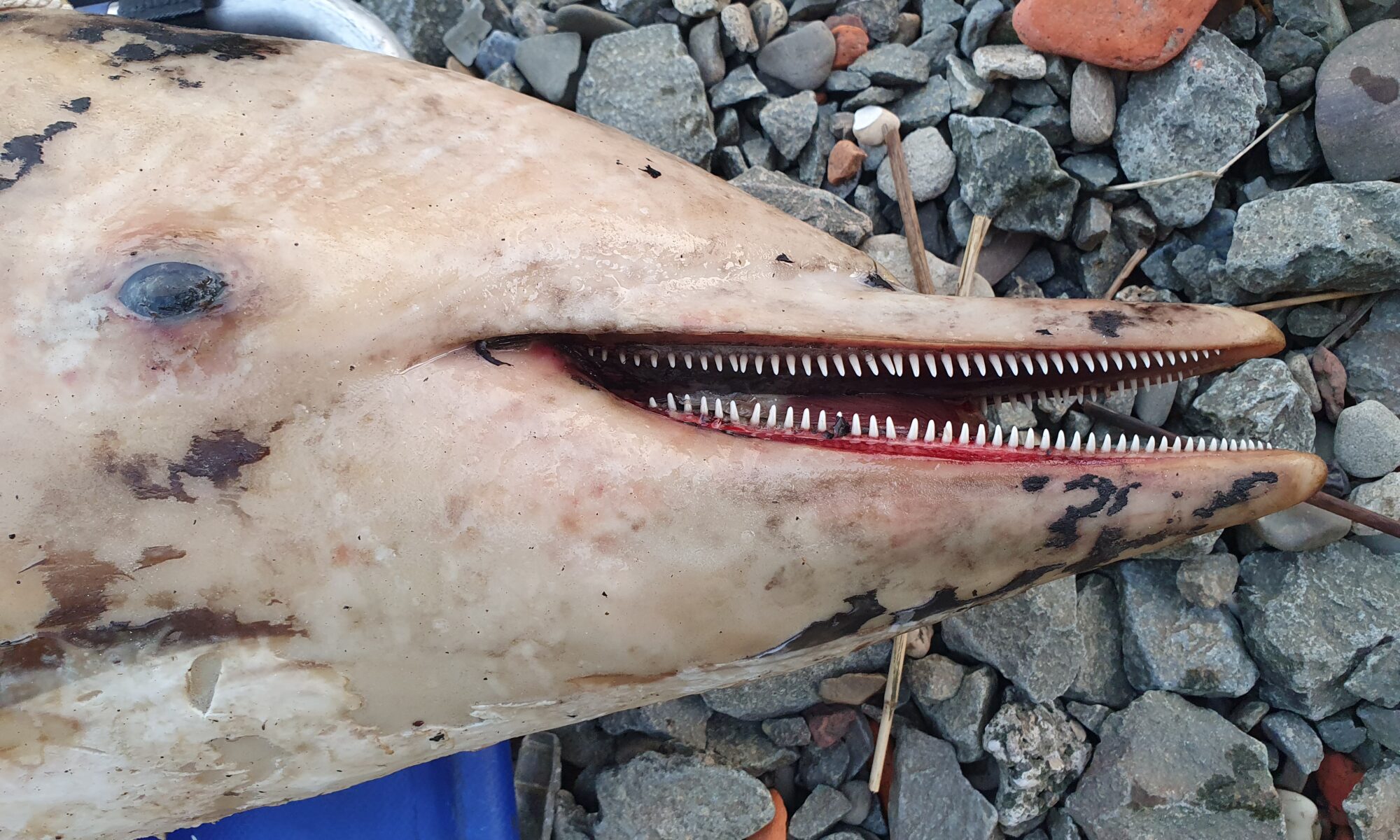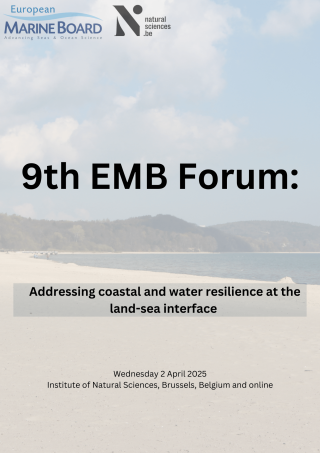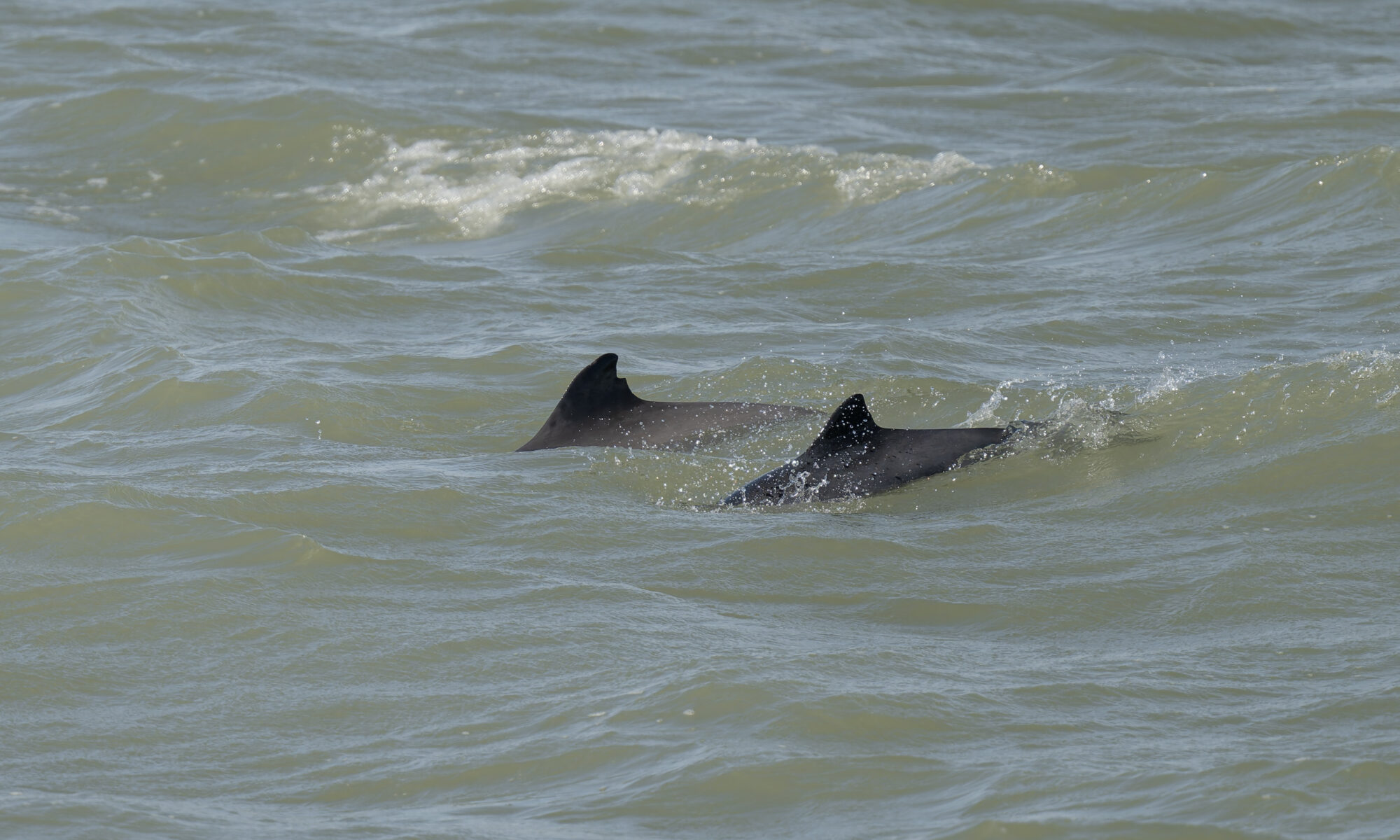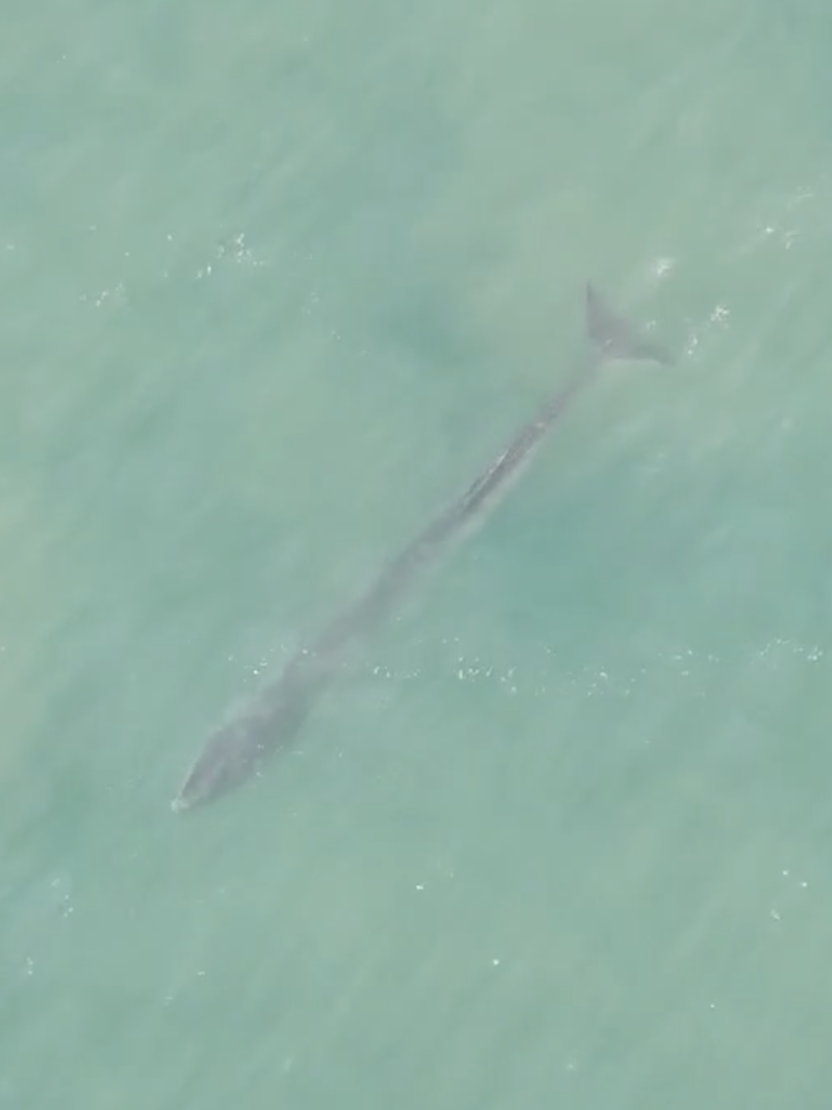Sorry, this entry is only available in Français and Nederlands.
Dolphin surfaces in the Scheldt, but does not survive
Early March, a passer-by found a dead dolphin washed ashore at the Scheldekaai in Burcht. The press attention for this exceptional find brought an even more remarkable fact to light: at the end of January, a ferryman had filmed a live dolphin further upstream in the Scheldt.
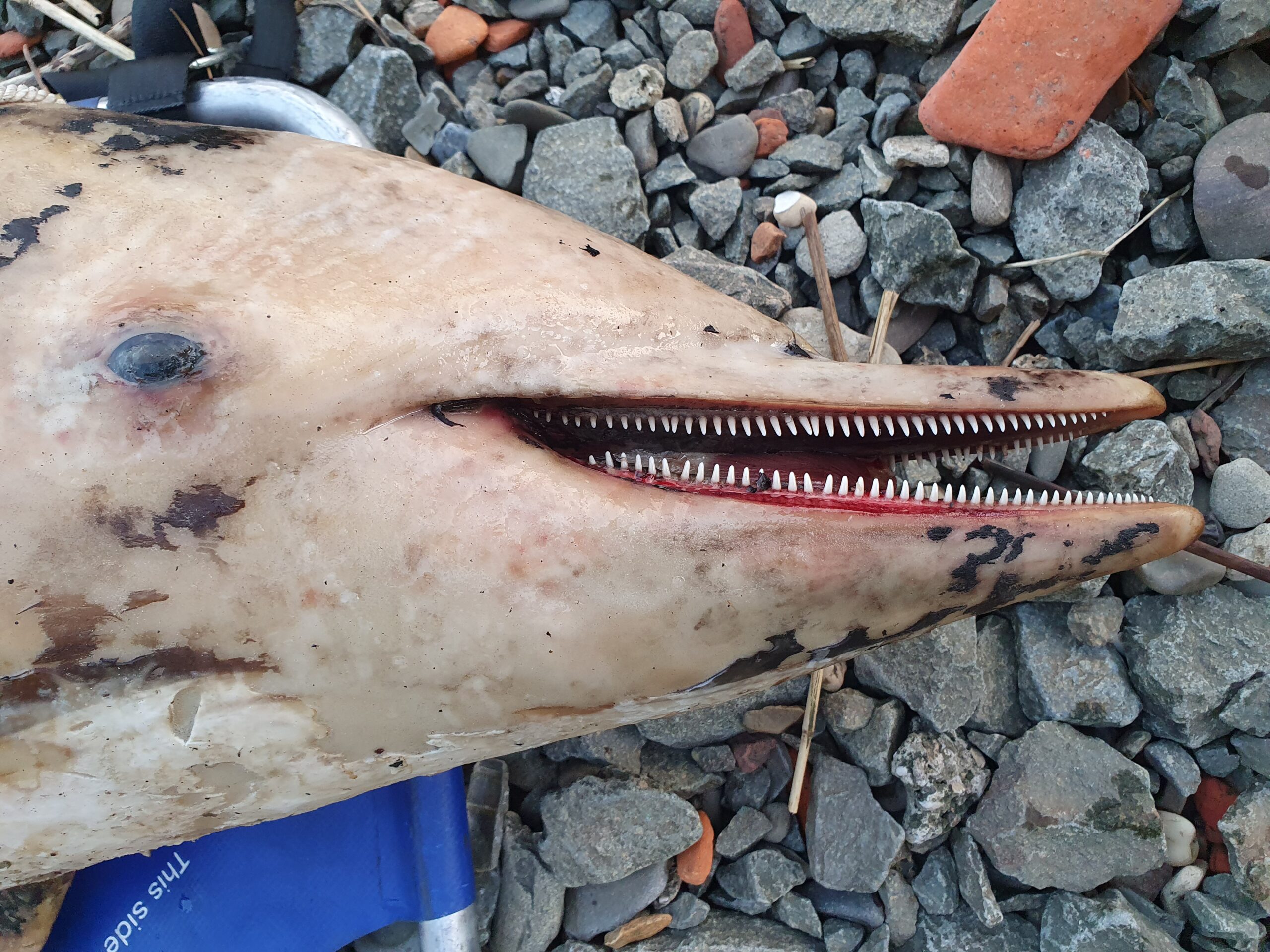
It was a strange surprise for Kobe Vercruyssen when he found a dead dolphin along the Scheldt in Burcht on 7 March 2025. The animal was lying about fifteen metres from the quay wall, and threatened to float back into the river with the rising tide. The news spread quickly via social media. Thanks to the quick response of Kobe and René Maes, who had rushed to the scene in the meantime, the carcass was tied to the quay wall with a rope so that it would not be lost.
After reporting to various authorities, the shelter ‘Wilde Dieren in Nood/Vogelopvangcentrum Brasschaat-Kapellen’ (VOC) eventually arrived on the scene to pick up the dolphin. The Antwerp fire brigade had to intervene to get the animal out of the water, after which the VOC brought the dolphin to the shed of the Agency for Nature and Forests (ANB) in Kalmthout for further examination.
Identification and cause of death
Analysis by ANB staff and the Mammal Working Group of Natuurpunt Antwerpen Noord & Kempen, in consultation with the Institute for Natural Sciences, determined that the animal was a young female with a length of 166 cm and an estimated weight of 70 to 80 kg. The skin was largely gone, making it difficult to determine what species it was. The teeth best match a common dolphin (Delphinus delphis), but a striped dolphin (Stenella coeruleoalba) could not be completely ruled out.
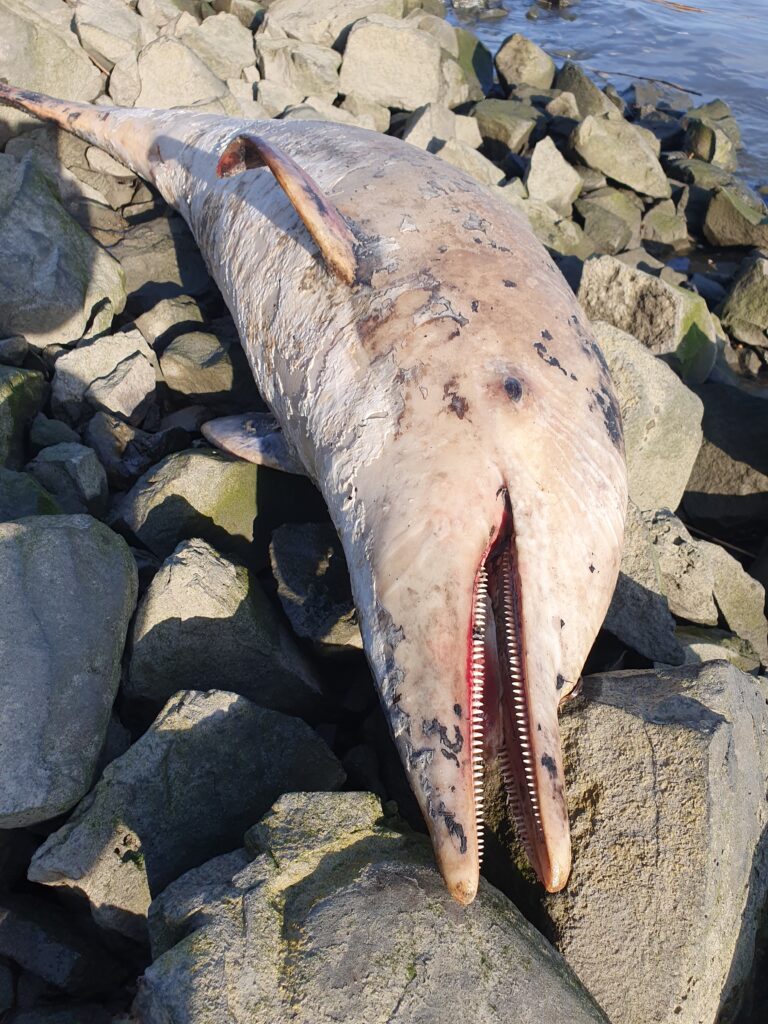
Because the carcass was already in an advanced state of decomposition, no exact cause of death could be determined. It was eventually taken away for destruction.
“The discovery and recovery of the Burcht dolphin was an example of rapid and efficient cooperation between citizens and various organisations, including Natuurpunt Waasland, Wilde Dieren in Nood/Vogelopvangcentrum Brasschaat-Kapellen, the Agency for Nature and Forests, the Institute of Natural Sciences and the Mammal Working Group of Natuurpunt Antwerpen Noord & Kempen. Despite the sad circumstances, this event offered a unique opportunity to study a rare marine mammal up close,” says Johan Neegers of the aforementioned mammal working group.
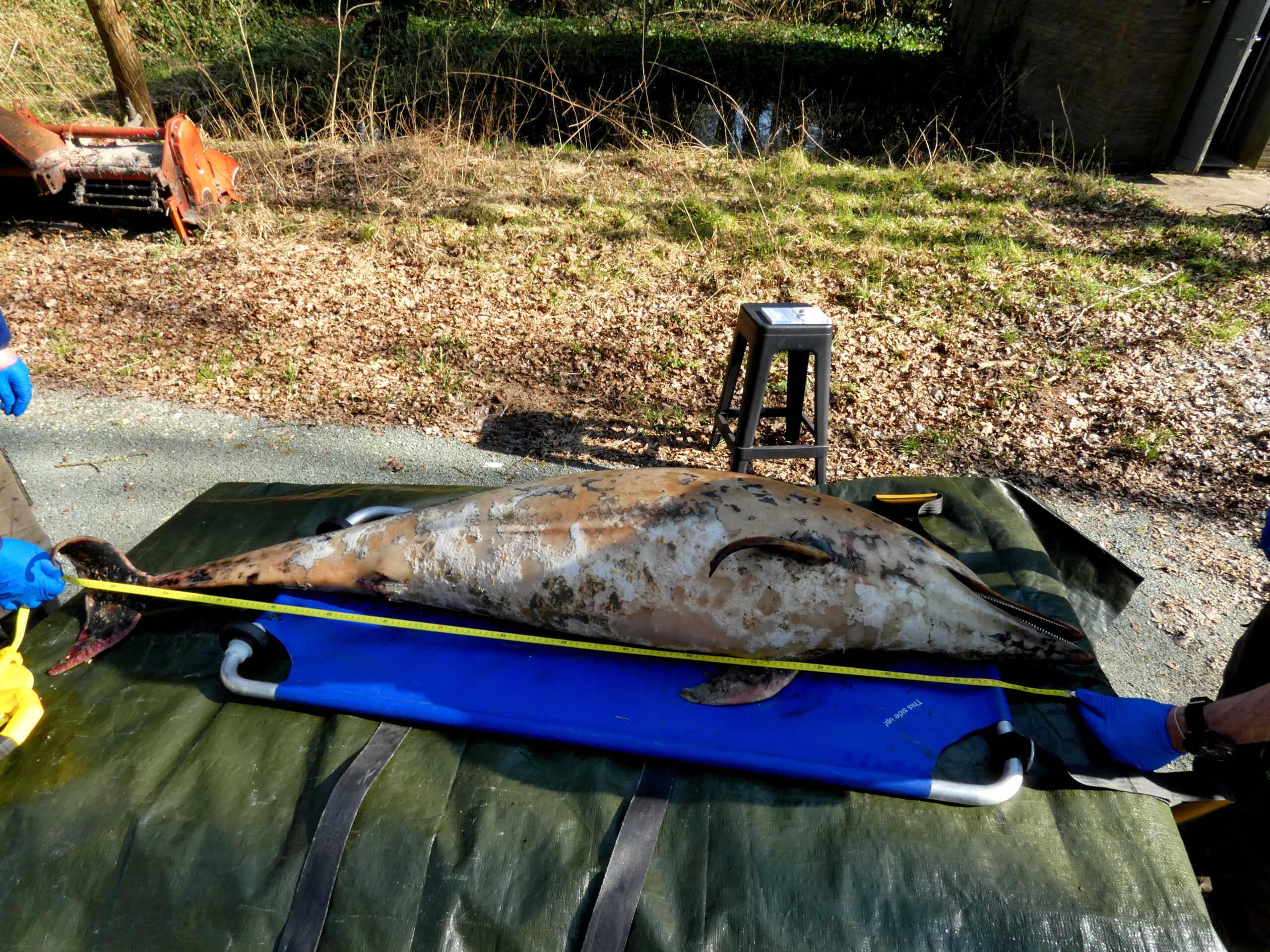
A surprising twist
The press attention that followed brought to light an even stranger fact, if possible. The discovery of the dead dolphin in Burcht reminded ferryman Nils Verbeeck of a special encounter that had happened to him more than a month earlier on the Scheldt, a long way upstream from Burcht. It prompted him to contact the Institute of Natural Sciences about it.
Nils appeared to have seen nothing less than a living dolphin in Hamme on January 31, 2025, and made a short movie of it that proved this beyond doubt. From the images it could be concluded that it was a common dolphin. It is very likely that this was the same animal that was found dead in Burcht 35 days later.
Common – and striped – dolphins are not adapted to life in rivers. They are species with a pelagic lifestyle, which means that they prefer the open sea and generally stay far away from coasts. Initially, it was suspected that the dead animal from Burcht had been drifted into the Scheldt by the tides, but this had to be adjusted based on the observation in Hamme. Why this dolphin swam so far up the Scheldt is not known. On the other hand, it is less surprising that she did not survive her visit to the river.
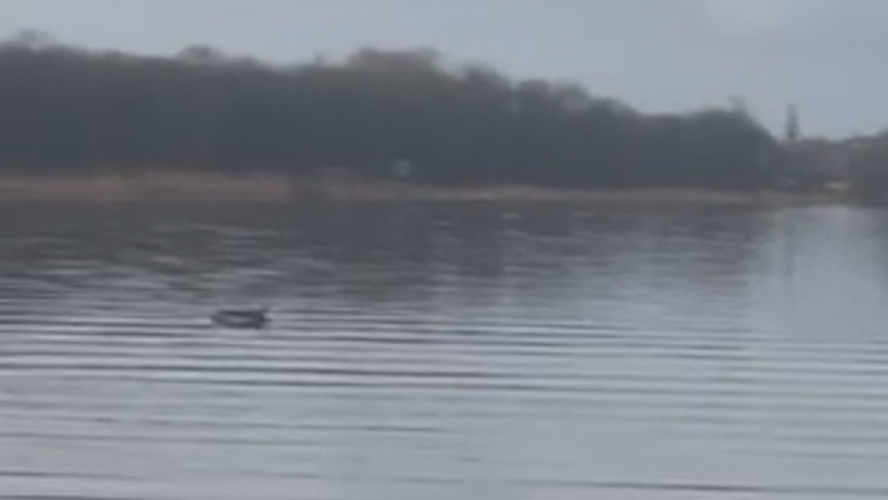
Rare appearance
Jan Haelters of the Institute of Natural Sciences explains how special the find is: “After the bottlenose dolphin and the white-beaked dolphin, the common dolphin is the most expected dolphin species in Belgian waters. Nevertheless, it remains a rare appearance here. In the past ten years, only a few cases of living common dolphins are known from our country, with an additional handful of observations where the identity could not be determined with certainty.”
Strandings of common dolphins are also rare in Belgium. On 22 December 2023, a recently deceased and therefore easily recognisable individual washed up in Ostend, but the other recent dolphins that possibly belonged to this species (one each in 2016, 2019 and 2020, and two more in 2023) were too decomposed to be assigned to this species with certainty. The common dolphin of Burcht and Hamme is not the first to be observed in the Scheldt, but as far as is known it is the one that swam the furthest up the river. In the Dutch part of the Scheldt, a common dolphin was observed near ‘s-Gravenpolder from the end of July to the beginning of September 2002. This animal was found dead in Saeftinghe on 8 April 2003.
The striped dolphin is even rarer in Belgian waters. This species has only been documented here with certainty twice: a stranding of a dead animal in 1981 and a sighting of a live animal from 15 to 19 May 2009. The latter also swam in the Scheldt (Doel and Verrebroek), did not survive this either and was found dead on 21 May of that year.
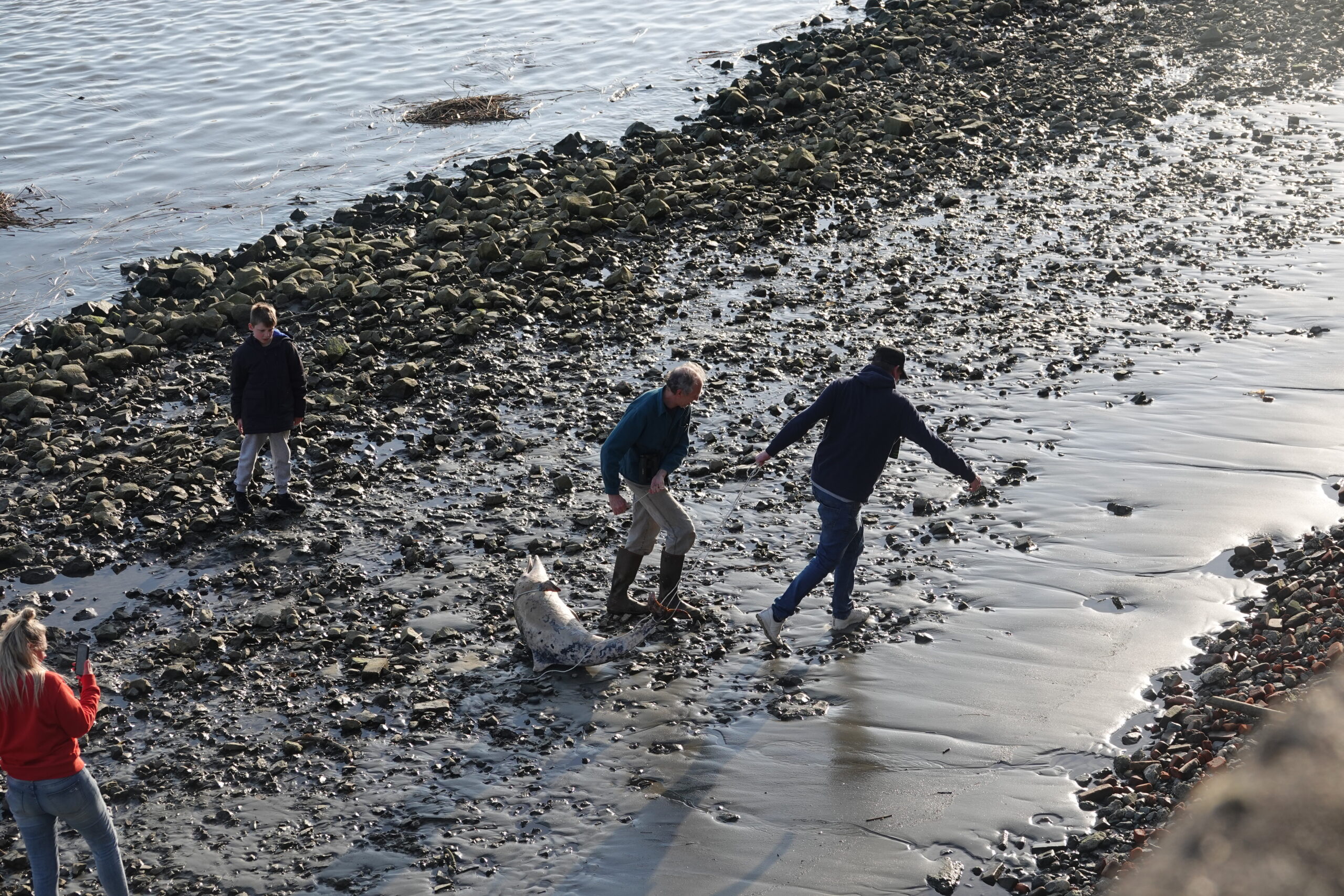
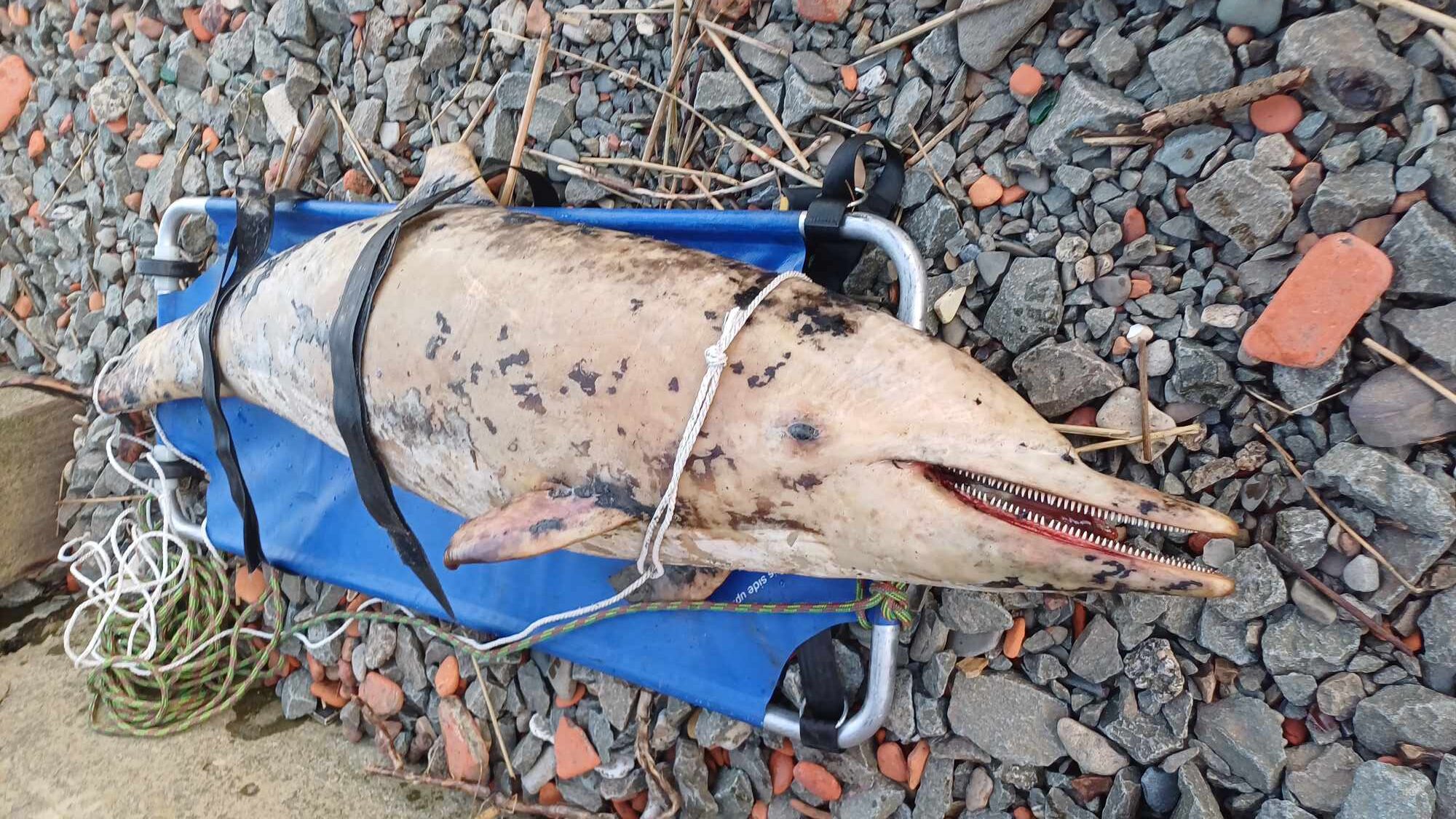
All persons and institutions involved are thanked for the smooth cooperation and flow of information. Forest rangers Bram Vereecken and Lucas Bergmans of the Agency for Nature and Forests respectively ensured the rapid internal reporting of the dolphin and the general coordination of the recovery and measurement of the carcass. Wilde Dieren in Nood/Vogelopvangcentrum Brasschaat-Kapellen ensured the transport to the ANB warehouse in Kalmthout.
Additional thanks go to Johan Neegers (Mammal Working Group Natuurpunt Antwerpen Noord & Kempen), René Maes (Natuurpunt Waasland), Jan Haelters (Institute of Natural Sciences) and Jaap van der Hiele (Stichting ReddingsTeam Zeediere, the Netherlands) for their cooperation on the text, and to Nils Verbeeck (Boottochten Jan Plezier), René Maes, Arlette Strubbe (Natuurpunt Waasland), Dafne Van Mieghem (Wilde Dieren in Nood/Vogelopvangcentrum Brasschaat-Kapellen) and Geert Steel (Mammal Working Group Natuurpunt Antwerpen Noord & Kempen) for providing the images.
9th EMB Forum on ‘Addressing coastal and water resilience on the land-sea interface’
On Wednesday 2 April 2025, the European Marine Board (EMB) will host its 9th Forum on ‘Addressing coastal and water resilience on the land-sea interface’.
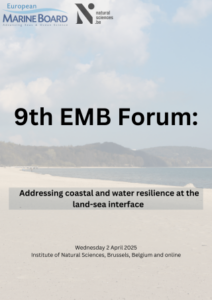 EMB’s open Fora provide an opportunity to bring together the marine science and policy communities to jointly discuss important issues.
EMB’s open Fora provide an opportunity to bring together the marine science and policy communities to jointly discuss important issues.
The 9th EMB Forum will discuss ‘Addressing coastal and water resilience on the land-sea interface’. This one day event will consider aspects such as policy and governance for the land-sea interface, pollution crossing the land-sea interface, and coastal adaptation and livability on the land-sea interface.
- Date: 2 April 2025
- Venue: Institute of Natural Sciences, Rue Vautier / Vautierstraat 29, 1000 Brussels, Belgium and online
A draft agenda for this event can be found here. Please note that some speakers are still TBC and will be confirmed in due course.
Registration for this event is open for both in person and online attendance. You can register here. Please note that in-person registration will close on Tuesday 25 March.
If you have any qustions about the event or your participation, please contact info@marineboard.eu
This event is being co-hosted by the Institute of Natural Sciences. This event is endorsed as being in support of the UN Decade of Ocean Science for Sustainable Development. It is also a recognised action in support of the EU Mission: Restore our Ocean and Waters.
The Belgian Federal State is represented in the EMB by the Belgian Science Policy Office (BELSPO) and in the EMB Communication Panel by the Institute of Natural Sciences.
Harbour porpoises avoid shipping
The increasing noise of ships crossing the North Sea is changing the marine environment. A new large-scale study analyzing aerial observations of marine mammals and shipping data has shown that harbour porpoises avoid areas with heavy shipping traffic. This avoidance could disrupt their feeding patterns and social behavior.
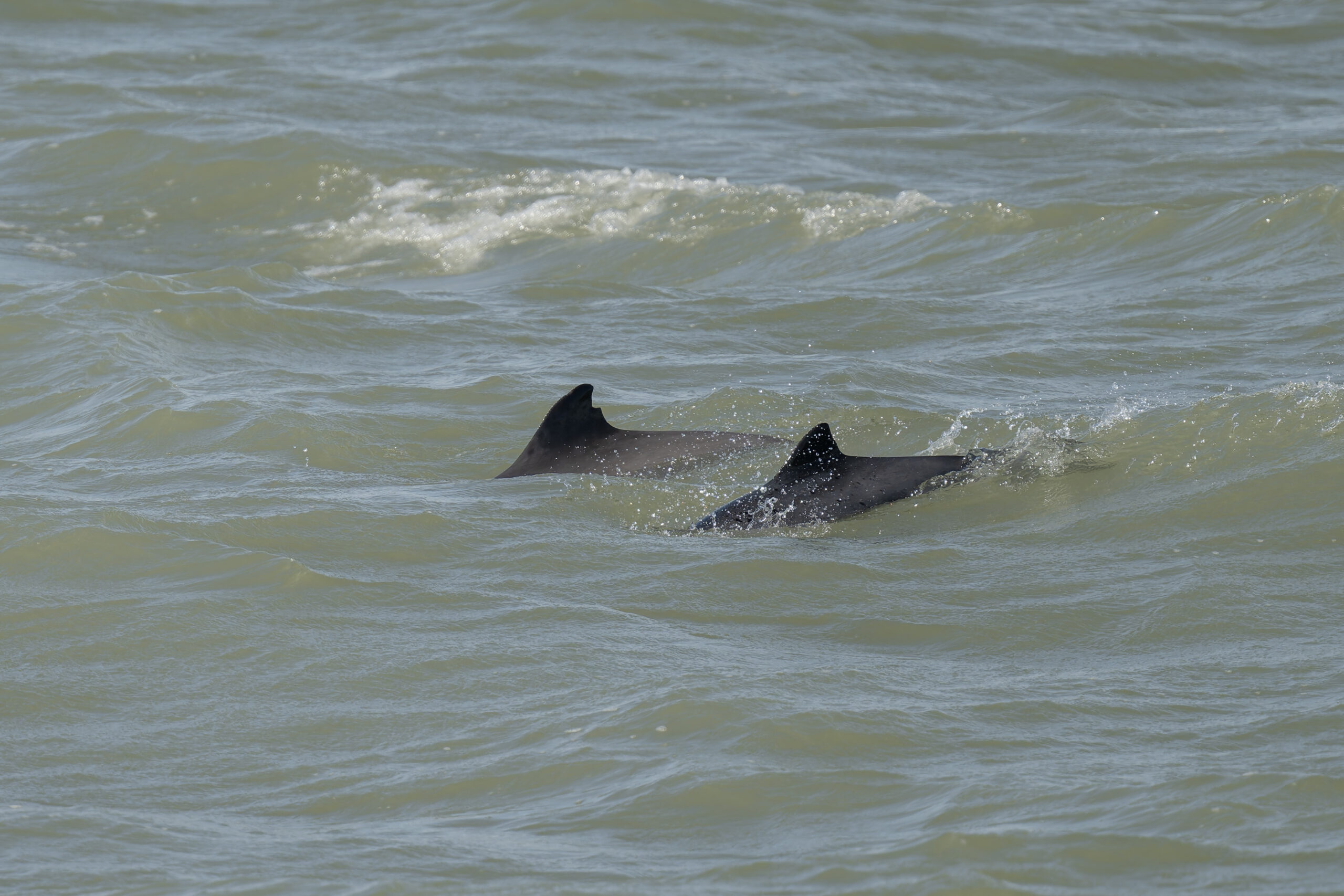
Researchers combined aerial observations of marine mammals with data from the Automatic Identification System (AIS) of vessels to map the impact of shipping on the distribution of harbour porpoises (Phocoena phocoena). Shipping intensity was used as a measure of noise intensity. Underwater noise can disturb harbour porpoises and make their environment less suitable as a habitat.
Between 2015 and 2022, researchers in Belgium and neighboring countries recorded 6,511 groups of harbour porpoises. The study compared different variables, such as ship noise, ship proximity, and frequency of ship passages, to determine which factor best explained the presence, or absence, of harbour porpoises in certain areas. The international research team was led by Rémi Pigeault of the Institute for Terrestrial and Aquatic Wildlife Research (ITAW) at the University of Veterinary Medicine Hannover (Germany), with contributions from Jan Haelters of the Institute for Natural Sciences.
The results show a correlation between high ship density and the reduced presence of harbour porpoises. The further from shipping routes, the less porpoises were affected but the impact remained noticeable up to 9 kilometers away. The study, published in Marine Pollution Bulletin in November 2024, confirms the increasing impact of underwater noise on marine ecosystems.
The impact of maritime traffic
The North Sea is one of the busiest maritime regions in the world, and shipping traffic is expected to increase further due to the expansion of offshore industries such as wind farms and oil and gas installations. Shipping generates underwater noise that travels over long distances, affecting marine life.
Harbour porpoises rely on echolocation to hunt, navigate, and communicate. Their extremely sensitive hearing makes them vulnerable to noise pollution. Previous studies have shown that loud ship noises cause porpoises to exhibit avoidance behaviors, such as rapid diving, increased swimming effort and interrupted feeding.
The results indicated that models incorporating real ship movements predicted porpoise distribution more accurately than those based solely on theoretical noise levels. “The ‘forced’ displacement of porpoises due to shipping can limit their ability to search for food”, explains Jan Haelters.
Implications for conservation and policy
The study highlights the need to consider the impact of shipping on marine life and to take measures where possible. As Rémi Pigeault states: “With increasing ship traffic and the expansion of offshore industries, it is essential to implement measures that minimize noise pollution and protect important porpoise habitats before the disturbance becomes irreversible.”
One potential solution is the designation of marine protected areas where shipping activities are restricted to safeguard vulnerable species. Another approach involves developing technologies that produce less underwater noise pollution. Seasonal restrictions on shipping or other noise-intensive human activities in crucial feeding and breeding areas for porpoises could also be an effective measure.
This research provides valuable insights that can contribute to sustainable marine planning, ensuring that harbour porpoises and other marine species in the North Sea continue to thrive.
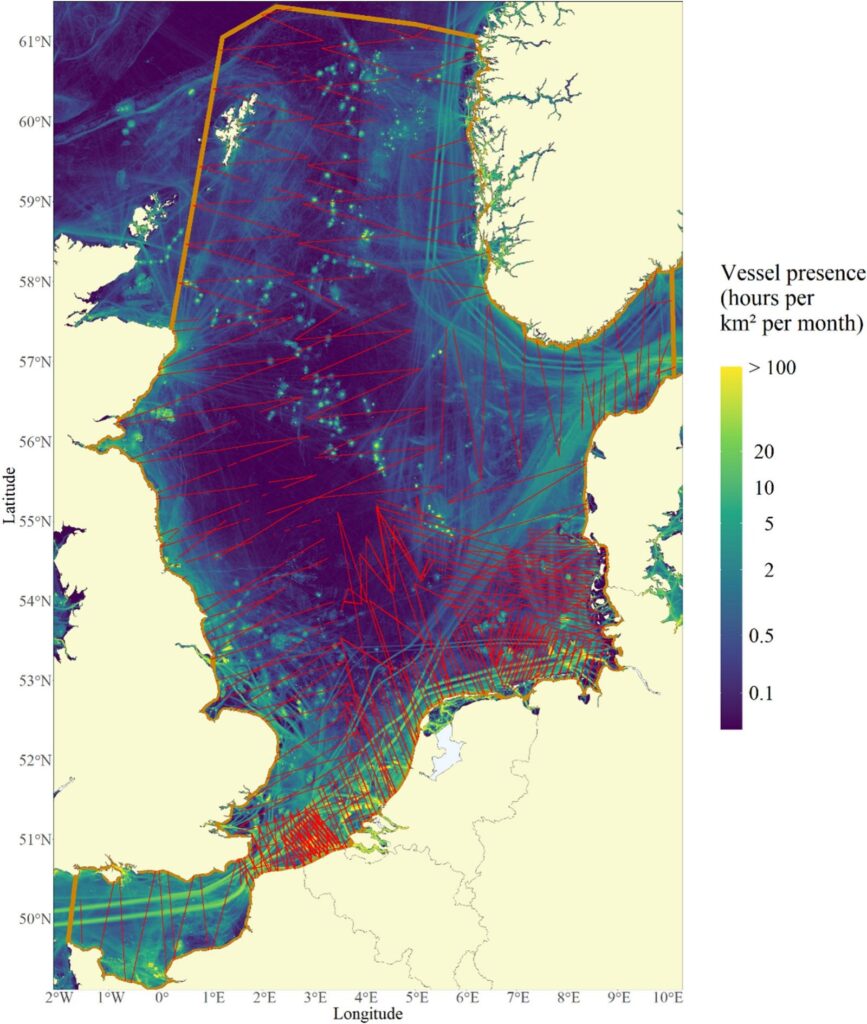
First living fin whale in Belgian waters
On Monday the 17th of February, a fin whale was spotted at the C-Power wind farm in Belgian waters. This is the first confirmed sighting, backed by images, of a live individual of this species in Belgium in recent times.
It must have been quite a surprise when an employee of the C-Power wind farm noticed a large cetacean in the wind farm on Monday the 17th of February, several dozen kilometers off the Belgian coast. The animal was filmed, and the footage was sent to the Institute of Natural Sciences, which coordinates the monitoring of the effects of offshore wind farms on the marine environment. The images allowed experts to identify the animal as a fin whale (Balaenoptera physalus), appearing to be a thin individual.
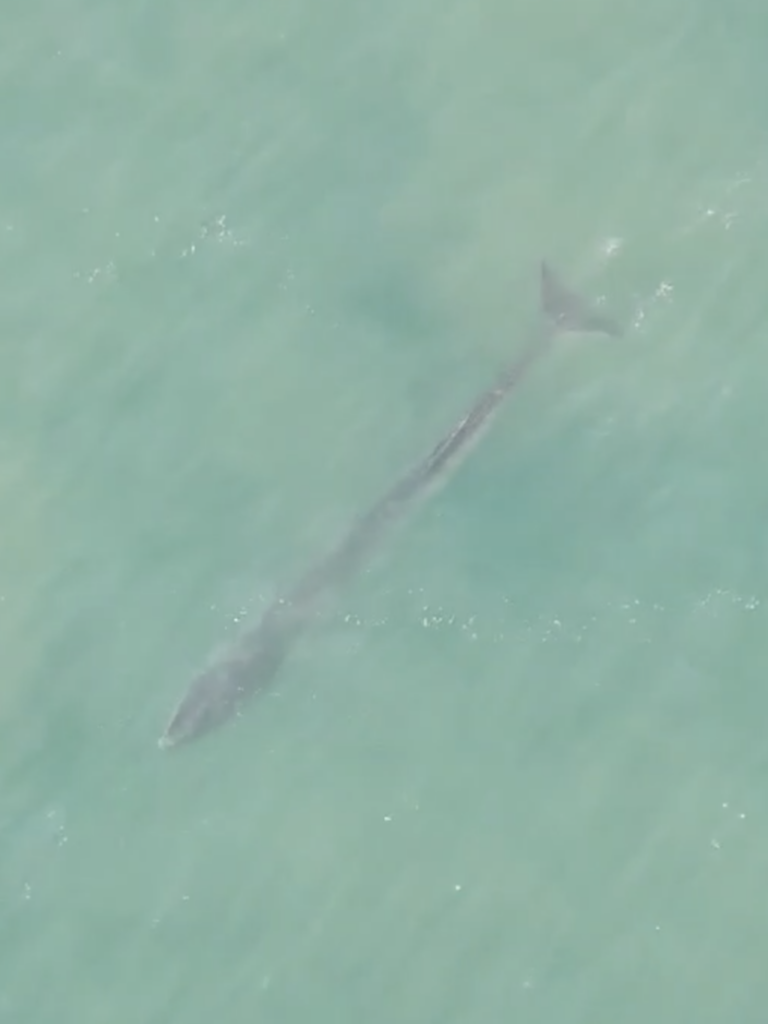
How rare?
All fin whales previously seen in Belgium and confirmed to be fin whales were dead specimens. A sighting of a fin whale at the C-Power wind farm is therefore highly exceptional. This is the first documented case, with images, of a living individual in Belgian waters.
In the 20th century, three strandings of fin whales were recorded along the Belgian coast. Severely decomposed specimens washed ashore in 1939 and 1978, followed by the stranding of a recently deceased whale in November 1997 (Ostend). A piece of stranded skin in September 1994 (also in Ostend) could not be definitively identified as belonging to a fin whale.
Although six Belgian cases have been recorded in the 21st century, they all involved dead whales. Four were fin whales struck by large ships. The first was observed only at sea (June 7, 2004), while the remaining three were found when ships entered ports (September 22 2009, Antwerp; November 9 2015, Ghent; August 29 2023, Antwerp).
A carcass spotted at sea on October 24, 2018, washed ashore in De Haan on October 25 under controlled conditions. Another dead whale drifted along the Belgian coast on September 30, 2022, before washing up in the Dutch town of Westkapelle on October 2.
An ocean giant with asymmetrical coloring
Reaching up to 27 meters in length, the fin whale is the second-largest whale species and thus the second-largest animal on Earth, surpassed only by the blue whale. It has a brownish-gray back and a white underside. A distinctive feature is its asymmetrical head coloring: the lower left jaw is dark, while the lower right jaw is white or light gray. The white right lower jaw is just visible in the footage taken at the C-Power wind farm.
Like many other large whales, the fin whale is a cosmopolitan species, meaning it is found in all major oceans, from polar to tropical waters. It feeds on krill, schools of fish and squid. The shallow North Sea does not provide an ideal habitat for the species. While fin whales generally migrate to northern feeding grounds in summer and southern breeding areas in winter, their migration patterns in the Atlantic Ocean are not well understood. Some individuals even remain in higher latitudes year-round.
Increase in Belgian cases
The population of fin whales in the North Atlantic is slowly recovering from the historical decline caused by whaling. Only Japan, Norway, and Iceland still allow whaling. A growing number of fin whales in deeper Atlantic waters increases the likelihood of a stray individual ending up in the shallow North Sea.
Additionally, the rising number of ships at sea has led to an increase in incidents involving large marine mammals. A significant portion of the fin whales that have ended up in Belgian waters died due to collisions with large ships, likely outside Belgian waters.
Finally, the chance of reporting unusual marine fauna – whether dead or alive – has greatly increased in recent decades due to the higher number of people at sea and the ease with which sightings, photos, and videos can now be shared.
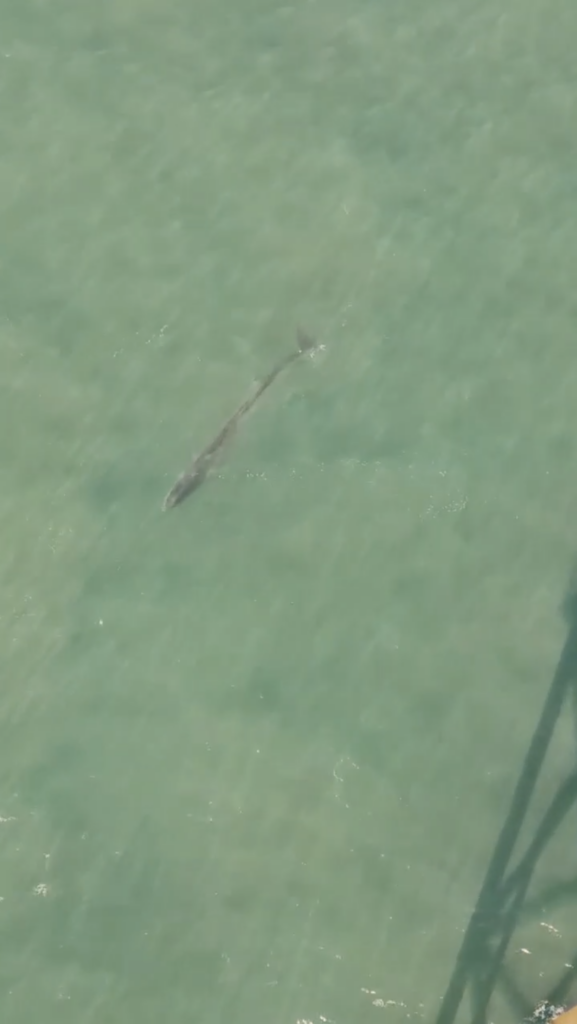
Three European Marine Board publications from 2024
In June 2024, the European Marine Board (EMB) published its Future Science Brief No. 11 ‘Marine habitat mapping’ during a ‘Brown bag lunch’ event hosted by DG Environment in Brussels. This document highlights current methods and future trends in the acquisition of data from the seabed and water column, discusses combining data to produce maps using modelling approaches and presents recommendations for adopting fit-for-purpose habitat classification schemes. It also provides an overview of what has been mapped within the European sea-basins, highlights the need to increase the quality and resolution of marine habitat maps, identifies critical gaps in habitat types and geographic extent, and describes the need to improve the assessment and communication of uncertainty and confidence in maps.
In October 2024, EMB launched its flagship foresight publication Navigating the Future VI “Placing the Ocean within the wider Earth system” in a dedicated event in Brussels. This document explores the critical role of the Ocean in relation to global climate, biodiversity, fresh water, and people, offering strategic direction regarding the future of marine research and policy. You can rewatch a recording of the event here and access the EMB slides here.
In December 2024, EMB published its Policy Brief No. 12 ‘Requirements for Coastal Resilience in Europe’. This Policy Brief presents key policy, scientific and community recommendations for building coastal resilience and enhancing the capacity to cope with impacts from coastal pressures, summarising the main messages and recommendations from the EMB Position Paper No. 27 “Building Coastal Resilience in Europe”. The recommendations from this document will be further discussed at the 9th EMB Forum on ‘Addressing coastal and water resilience on the land-sea interface‘ to be held on 2 April 2025 at the Institute of Natural Sciences in Brussels.
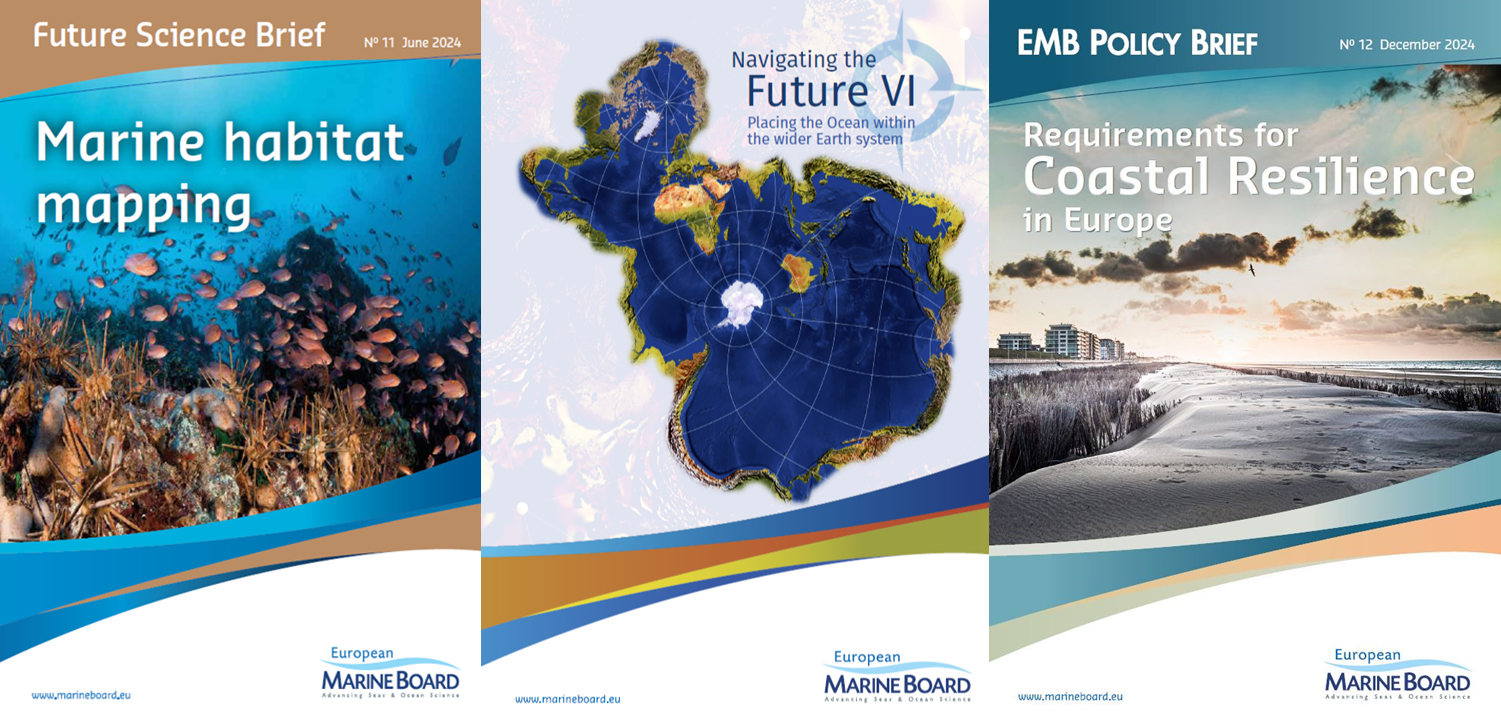
The way in which EMB publications and their high-quality science-policy recommendations contribute to the Ocean Decade and its Challenges are highlighted inside each individual document.
More EMB publications can be found here.
The Belgian Federal State is represented in the EMB by the Belgian Science Policy Office (BELSPO) and in the EMB Communication Panel by the Institute of Natural Sciences.
Public consultation: Applications for an environmental permit for sand and gravel extraction
TV Zeezand Exploitatie, Dranaco NV, Charles Kesteleyn NV en Satic NV have applied on December 13th, 2024 for the prolongation and/or extension of their concession for sand and gravel extraction in the Belgian part of the North Sea. These applications are subject to an environmental impact assessment procedure. The applications and the environmental impact assessment report, including a design of appropriate assessment, can be downloaded below.
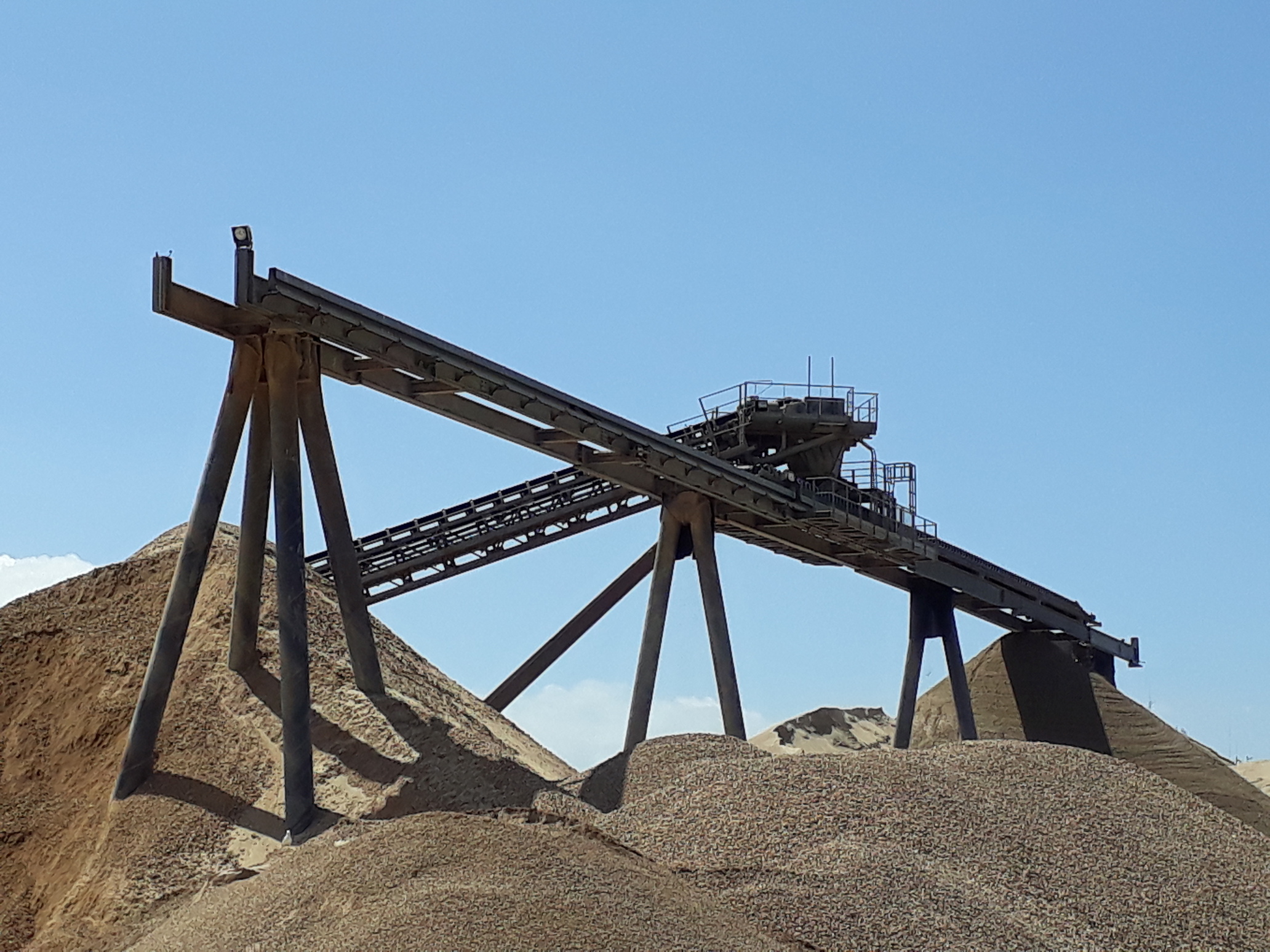
Applications
- Aanvraag-concessie TV Zeezand Exploitatie CP10
- Aanvraag-concessie_Dranaco CP06
- Aanvraag-concessie_Kesteleyn CP01
- Aanvraag-concessie_Satic CP07
Environmental impact assessment report
- BE0119000341_MER zandwinning_update PB v2.0_dd. 28032022_incl bijlage
- BE0119000341_MER zandwinning_v7.0_Finaal_20201112
Additional information
Study day sea sand 2021
Study day sea sand 2021
- 1_Ontginning_monitoringrapport_Florian Barette
- 2_Hersteldynamiek_Annelies De Backer
- 3_Impact op grote afstand_Benjamin Van Roozendael
- 4_Zandbeschikbaarheid en -winning_Koen Degrendele
- 5_Zandbehoefte industrie_Herman De Backker
- 6_Kustbescherming_Edward Van Keer
- 7_Zandvoorraad Nederland_Wout van Dijk
- Seminar-2024-gold-north-sea-Monitoring-report-2021-2024
Workshops
- Cumulatieve voetafdruk_OD Natuur
- Kustbescherming_Afdeling Kust
- New technological perspectives ecological evaluation soil impacts_ILVO (NEWTEC~1)
- Unveiling the Wonders of Backscatter_Marc Roche
- Update reglementering en controle_Continentaal Plat en Marien Milieu (UPDATE~1)
- Zeezand en recyclagezand_AC Materials
Results of the consultations
The public consultation runs from 31 January until 2 March 2025.
Any interested party can submit its views, comments and objections to MUMM by letter or email until 17 March 2025.
MUMM
Attn. Patrick Roose
Vautierstraat 29
1000 Brussels
bmm@naturalsciences.be
northseabelgium.be bundles news about Belgian North Sea policy
Anyone who is concerned with the sustainable management of the Belgian part of the North Sea or wants to stay informed about the North Sea policy can now visit northseabelgium.be. The website summarises the latest developments in policy and scientific research, and is an initiative of the Minister of the North Sea and the federal government services that are active around our eleventh province.
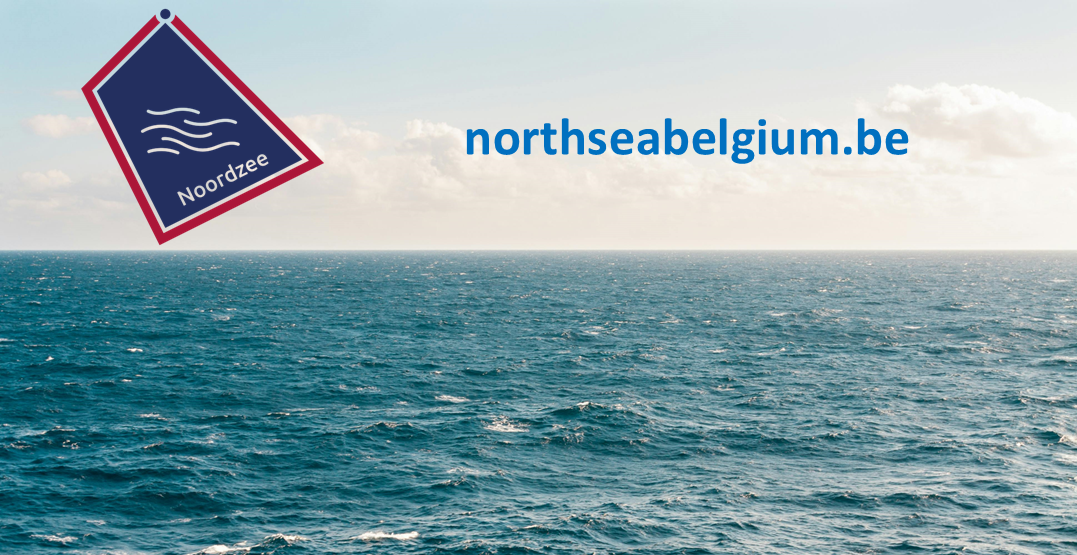
With an area of 3,452 km² and a coastline of 67 kilometers, the Belgian part of the North Sea is a small marine area, but one with big ambitions. It is our 11th province and essential for the future of our country.
Among other things, Belgium is pioneer in marine spatial planning, with its efforts to generate sustainable energy at sea and to reduce the environmental impact of shipping, and actively works to integrate opportunities for nature restoration and development within all human activities at sea. We have a lot to be proud of and can rightly call ourselves a Blue Leader.
In developing the Belgian North Sea policy, several federal government services and their various partners are involved. They each report on their activities and achievements via their own websites and other communication channels, whereby the overview for interested parties and those involved is often lost.
At the initiative of and in collaboration with the Minister of the North Sea, the Scientific Service ‘Management Unit of the Mathematical Model of the North Sea (MUMM, Institute of Natural Sciences), the Marine Environment Service (Federal Public Service Health, Food Chain Safety and Environment) and the Directorate-General for Shipping (Federal Public Service Mobility and Transport) developed the joint website northseabelgium.be. This website provides clear information on the latest news regarding Belgian North Sea policy and scientific research, and on the services and activities of the services involved.
Three blue themes
The news, services and activities are organized within three themes: Blue Nature, Blue Shipping and Blue Economy.
![]()
Blue Nature – Our Belgian North Sea is our country’s largest nature reserve, home to a vibrant and rich biodiversity of animal and plant species, and the unique underwater landscape of the Flemish Banks. The sustainable management and protection of marine blue nature is essential for the prosperity and well-being of both present and future generations. We are fully committed to the conservation, restoration and development of blue nature at national, European and international level. Attention is paid to nature in protected areas as well as within the concession zones for various human activities.
![]() Blue Shipping – The Belgian part of the North Sea is on the approach route to our own and foreign seaports, making it one of the busiest sea areas in the world. Within the International Maritime Organisation (IMO), we take an ambitious position on reducing shipping emissions. However, Blue Shipping stands for much more, as we also work around waste management, essential resources on board, seafarers’ welfare and working conditions, safety at sea, maritime security, regulations for workboats and fishing vessels, and the sustainability of fisheries, among others. Pleasure boating also receives due attention.
Blue Shipping – The Belgian part of the North Sea is on the approach route to our own and foreign seaports, making it one of the busiest sea areas in the world. Within the International Maritime Organisation (IMO), we take an ambitious position on reducing shipping emissions. However, Blue Shipping stands for much more, as we also work around waste management, essential resources on board, seafarers’ welfare and working conditions, safety at sea, maritime security, regulations for workboats and fishing vessels, and the sustainability of fisheries, among others. Pleasure boating also receives due attention.
![]() Blue Economy – Energy production, fishing, aquaculture, sand and gravel extraction, disposal of dredge spoil, … the Belgian North Sea has many other functions and users besides nature conservation and shipping! The marine spatial plan 2020-2026 determines which activities can be developed safely and with respect for nature, in which location and under what conditions, and where activities can be combined. The protection of underwater heritage (e.g. shipwrecks) and the installation of various measuring infrastructure (buoys, measuring poles, radars) also receive attention, military training areas are provided, and the management and clearance of the Paardenmarkt ammunition dump is examined.
Blue Economy – Energy production, fishing, aquaculture, sand and gravel extraction, disposal of dredge spoil, … the Belgian North Sea has many other functions and users besides nature conservation and shipping! The marine spatial plan 2020-2026 determines which activities can be developed safely and with respect for nature, in which location and under what conditions, and where activities can be combined. The protection of underwater heritage (e.g. shipwrecks) and the installation of various measuring infrastructure (buoys, measuring poles, radars) also receive attention, military training areas are provided, and the management and clearance of the Paardenmarkt ammunition dump is examined.
North Sea: small sea, big ambitions
The launch of northseabelgium.be emphasises the power of cooperation between various federal North Sea services and is an important step in strengthening public awareness of the Belgian North Sea policy. The platform is an invitation to everyone – from policy makers to citizens, from companies to scientists – to be part of the sustainable future of our North Sea. In addition, digital information packages are also offered for secondary school pupils, to make young people aware of the importance of our North Sea. Visit the website and discover how we are building a balanced, innovative and sustainable future for our 11th province together.
Minister of the North Sea Paul Van Tigchelt: “Our North Sea is an invaluable source of nature, energy and innovation. Belgium is a global leader in the field of nature conservation, blue shipping and the blue economy. This success is due to close cooperation and information sharing between the services involved in North Sea policy, which is essential for achieving our ambitious goals. With northseabelgium.be we are taking an important step in strengthening transparency and cooperation, and we are demonstrating our leadership role in the sustainable development of the North Sea.”
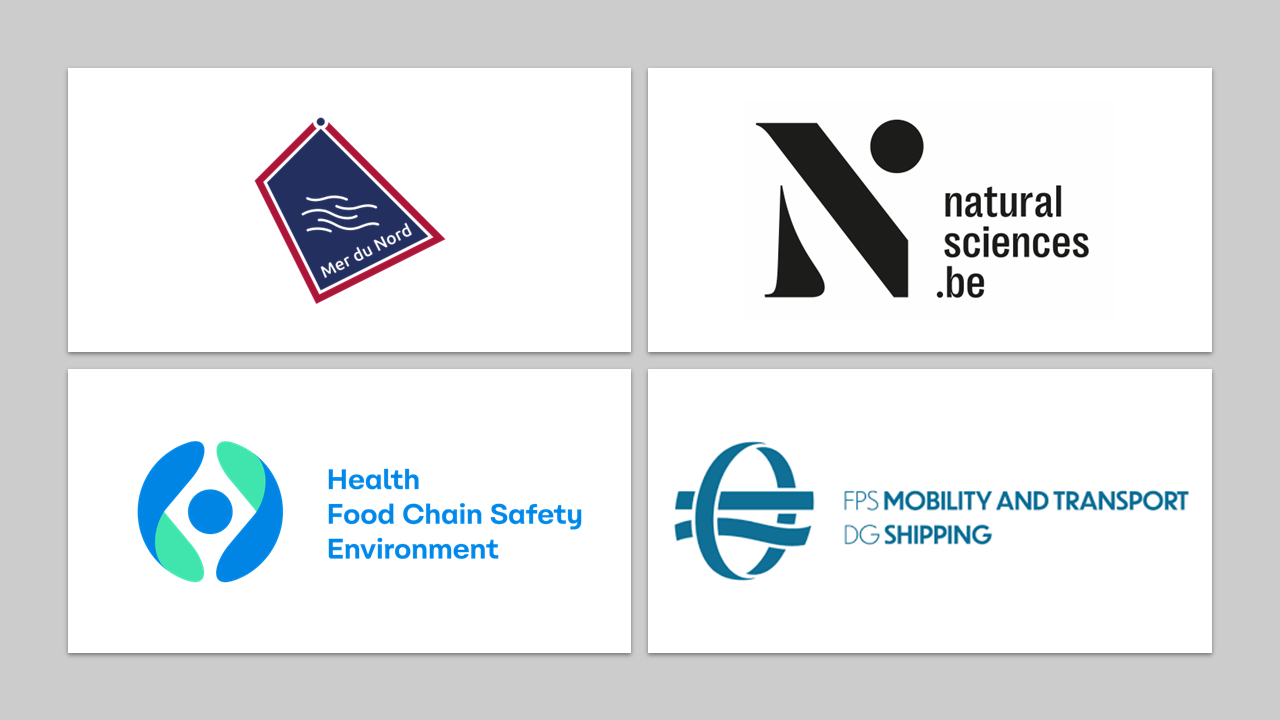
SWiM – Combining wind and solar energy in the Belgian North Sea
In the SWiM project, six partners join forces to conduct research into the combination of marine technologies in the Belgian North Sea. The focus is on an ecologically sustainable integration of floating solar panels in wind farms.
The technology for floating photovoltaics has made great progress in recent years. Systems for lakes and reservoirs are being rolled out at gigawatt scale worldwide. Several approaches have been developed for offshore use, and a first number of demonstrators are being installed for this innovative technology.
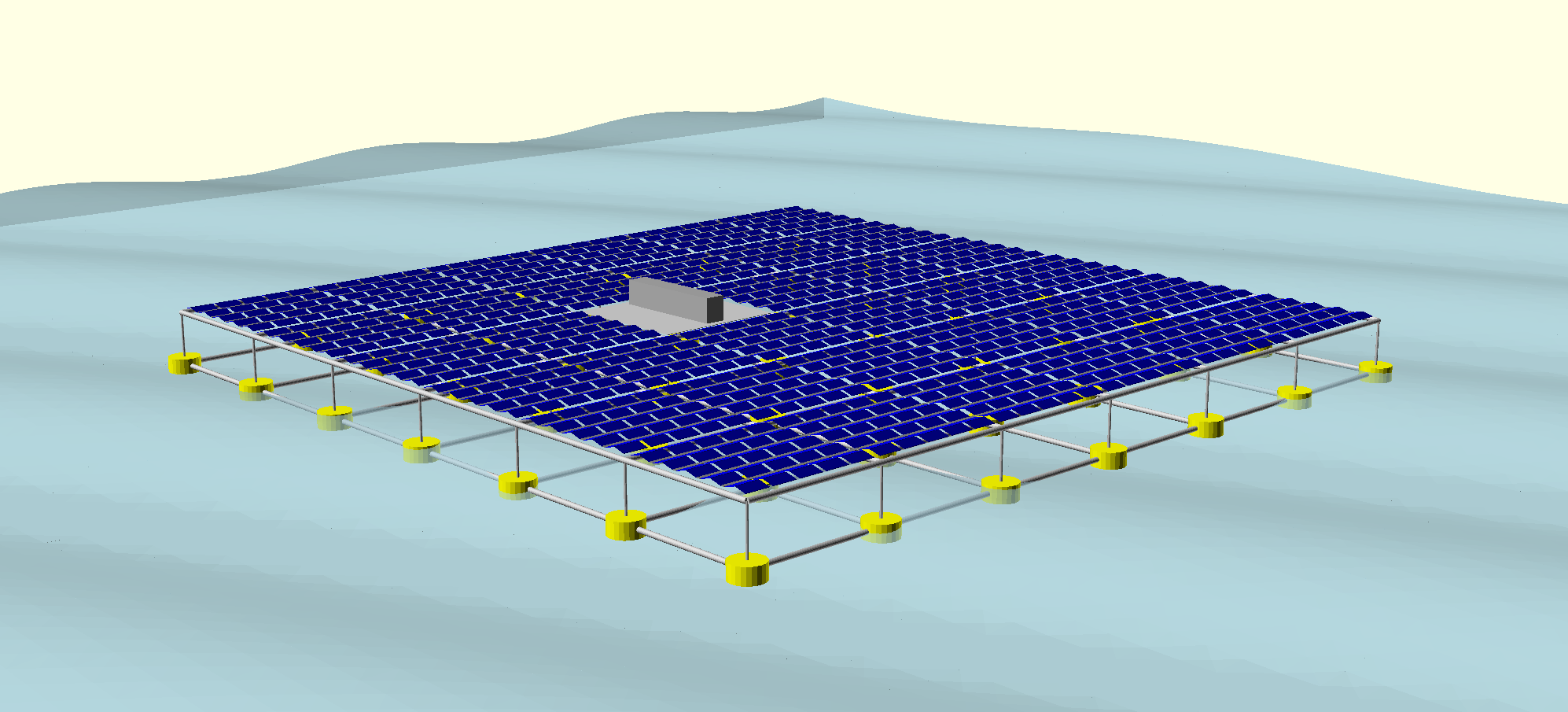
Owing to the harsh environment with its strong waves, wind, and risks of corrosion and fouling, this requires an entirely new structural development. Covering an area of less than 10% of a wind farm, photovoltaic systems with a nominal power approximately matching that of the wind turbines can be connected sharing the same grid connection, which helps reduce costs.
The exact limits and curtailment losses have to be worked out by detailed analysis. A major beneficial factor is the complementarity of electricity generation between wind and solar throughout the year, as both energy sources are most productive at different times of the day and the year.
Concept
The SWiM project, which stands for Solar and Wind in the Belgian Marine Zone, is funded by the Energy Transition Fund of the Federal Public Service of the Economy and strives to draw up technical guidelines and policy recommendations towards multi-use of commercial zones at sea in so-called Mariparks.

In this concept, different technologies will be combined taking into account the possible effects of these parks on the marine environment, with effective and efficient integration of electricity generation by offshore wind and photovoltaics playing a key role.
The results will be disseminated broadly to serve as a basis for decisions of commercial players and authorities alike.
Approach
- The strengths and weaknesses of existing structures will be analysed, and options for the placement of floating solar panels within wind farms and ecological effects will be mapped out. The rules for deployment within wind farms need to be refined to consider different requirements and the interests of all users. Stakeholders will be consulted to work out rules that are safe and effective.
- The electrical performance of the solar panels will be modelled in detail based on an existing framework for simulating energy yields. Specific measures will be identified to ensure reliability of components in harsh offshore conditions.
- The detailed limits are determined by the thermal load of cables, and corresponding models will be refined to ensure best scaling while maintaining safe operating conditions.
- Apart from the dimensions, the anchoring and mooring design determines to a large extent how the space at sea can best be used. This is complemented by requirements for safety distances and dedicated spaces for other uses. . In addition, biological effects need to be taken into account.
- A distinct goal of the project is to draw up policy advice and have an impact on marine spatial planning and permission rules. A series of workshops will therefore be held where stakeholders from all relevant areas can provide input. The project thus aims to develop guidelines that allow effective and safe co-use of the marine area designated for commercial purposes.
Johan Driesen, Professor of Electrical Engineering at KU Leuven and affiliated with EnergyVille: “With the complementary expertise of the partners, we will determine the boundary conditions for the integration of solar and wind energy offshore. We will engage with stakeholders to work out pathways for effective deployment of this exciting combination of technologies. This can help to put Belgium firmly on the map when it comes to innovative renewable energy generation.”
Partners
The project brings together six research, policy and industry partners:
- Laborelec has broad expertise in renewables and electrical systems and infrastructure, including offshore wind, solar energy, energy storage, power conversion systems and electric cable testing. The renewables team has been conducting internal research projects on offshore wind and floating solar energy for several years, financed by ENGIE Research&Innovation.
- With a sustainable blue economy as its core business, Blue Cluster has built up considerable expertise in (international) marine policy and gives advice to policy makers based on the experience of innovative technologies in its projects. We are involved in various innovative projects dealing with multi-use of marine spaces as well as Marine Spatial Planning, and provide a strong link to the business community.
- The Institute of Natural Sciences possesses significant expertise in marine ecology, covering hydrodynamic and biogeochemical modelling, experimental work, and field studies. The competences in quantifying and evaluating the environmental impacts of floating solar panels at sea, and more generally of human activities at sea (including offshore wind farms), were developed and applied in several previous research projects.
- Imec/EnergyVille runs and develops a modelling framework allowing to calculate the energy yield of several integrated photovoltaic applications as a function of environmental conditions and installation constraints. By extending a model established in the ‘MarineSPOTS’ project, the energy system will build further on degradation models for PV systems under different stressors, which can be refined with the unique environment of offshore photovoltaics.
- UHasselt / EnergyVille has broad expertise in the domain of energy systems reliability within the department imo-imomec, in collaboration with imec. In previous projects, this research group worked on reliability modelling and testing of solar modules and power electronic systems under different thermal, mechanical and electrical stresses, as well as PV system design, in-situ sensing and energy optimisation.
- On top of existing broad know-how in marine structural design, KU Leuven / EnergyVille has gained significant expertise in offshore photovoltaics over the past two years, not least through the ‘MarineSPOTS’ project. The electrical backbone of renewable energy systems, both in terms of power electronic converters and power system integration, forms part of their background, as do grid design and market aspects.
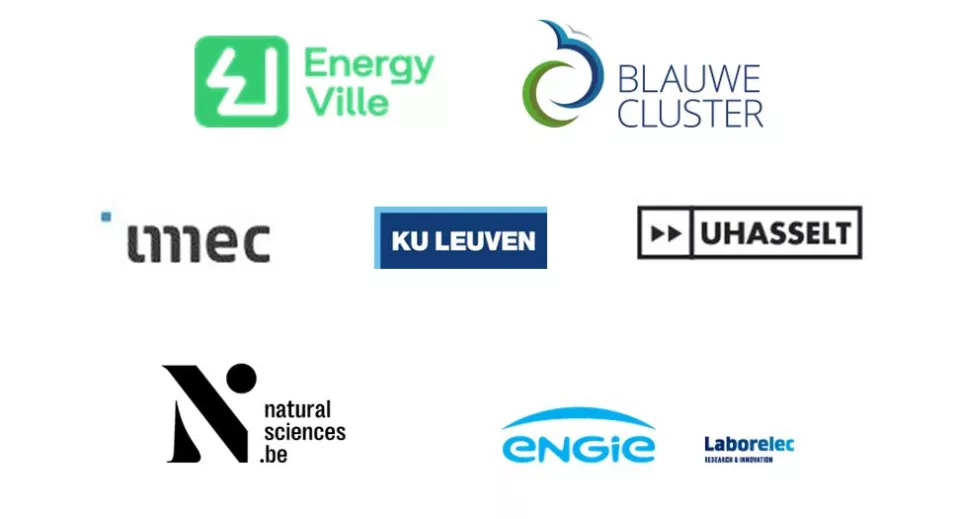
The SWiM project is funded by the Energy Transition Fund of the FPS Economy, SMEs, Self-employed and Energy, and will be guided by an Advisory Board of ten industry members active in the marine space and renewable energies.
Monitoring of oil and gas platforms in the North Sea in 2024
From 9 to 13 September 2024, the surveillance aircraft of the Institute of Natural Sciences carried out its annual Tour d’Horizon (TdH) mission to monitor the offshore oil and gas platforms in the wider North Sea region. Despite the rough weather conditions, eight contaminations were documented.
The Tour d’Horizon is carried out annually in the context of the Bonn Agreement. For this, Belgium cooperates with other countries around the central and northern North Sea, and the Belgian aircraft also visits Dutch, German, Danish, Norwegian and British waters. The aircraft is flown by pilots from Defence and manned by aerial operators from the Institute of Natural Sciences.

The TdH contributions from the various North Sea countries are coordinated according to a predetermined schedule and fixed route points. This guarantees optimal coverage and monitoring of the offshore oil and gas infrastructure.
Eight pollutions
During the Belgian TdH ’24 mission, eight slicks were observed, which is significantly less than in recent years. This can mainly be attributed to the rough weather at sea, which causes any pollutions to break down naturally almost immediately.

The observed pollutions concerned six oil spills, five of which could be linked to oil rigs. One oil spill was observed without a polluter in the vicinity. This was also the only spill of significant size (with an estimated volume of more than 1 m3). The remaining two spills were linked to an oil rig, but due to time and fuel constraints it could not be visually verified whether or not it concerned oil. All detections were reported to the competent national authorities in accordance with the procedures laid down in the Bonn Agreement.

Taking international responsibility
Thanks to the many years of experience of the crew, the functionality and deployability of the surveillance aircraft, Belgium continues to meet its commitments under the Bonn Agreement. As such, the Institute of Natural Sciences continues to demonstrate its commitment to better protection of the North Sea.
